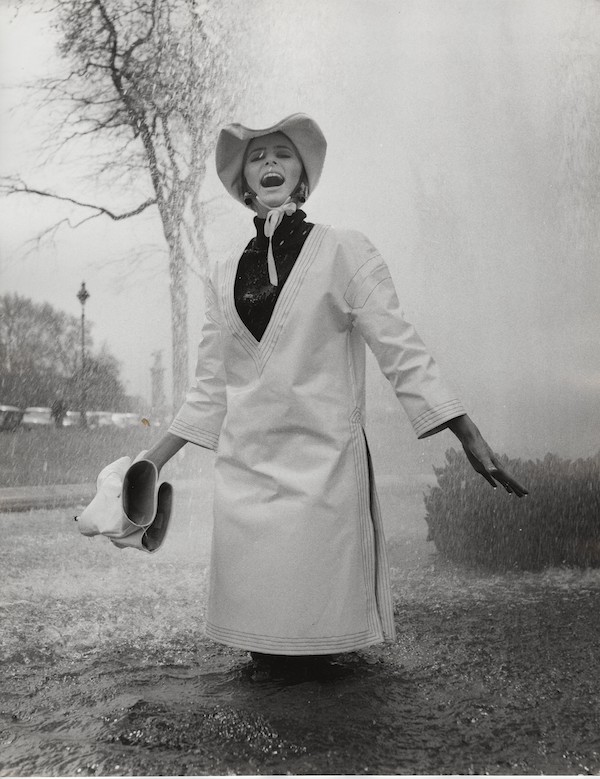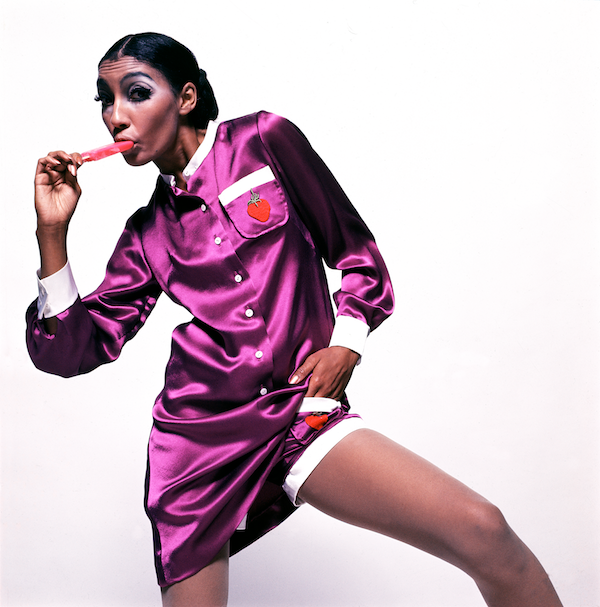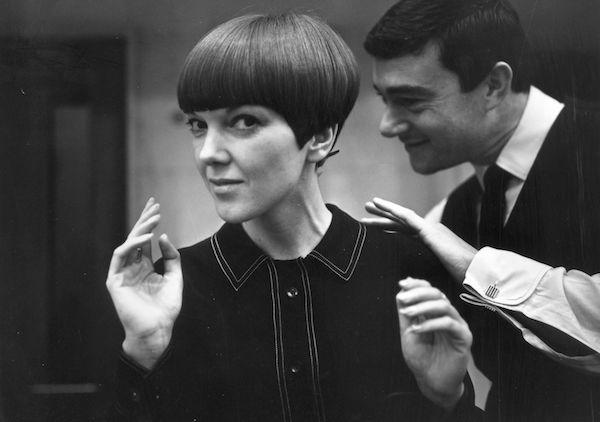Mary Quant first made her name in 1955 with the wildly fashionable King’s Road boutique Bazaar. Initially selling a “bouillabaisse” of stock it was not until a pair of pyjamas she made was bought by an American who said he’d copy and mass produce them that Quant began dedicating herself to her own designs. Fittingly then, the V&A’s exhibition is not so much about the clothes as the attitude – commerce topped Quant’s priorities, fashion was the means.
The roughly chronological exhibition is spread over two floors. While the lower level deals with the early, post-war years when Quant’s designs pushed sartorial boundaries, the mezzanine above shows how commercial success allowed her to break them with panache.
 Around the time Quant clothes were becoming popular, central heating was a luxury and clear codes around how to dress and behave were still very much in force – despite the war years trousers, for instance, remained mostly off limits for women. With an approach to fashion governed by “the working girl herself,” Quant instead opted for a fresh approach which cut across class and gender, designing cricket inspired women’s jumpers with navel grazing V-necks, fisherman pockets for her rain wear, and using men’s suit tweed and butcher apron fabric for low slung women’s trousers and smocks. Surreal signature features included pockets so far down a dress as to render them useless, emphatic placket slashes, asymmetrical cuts and oversized bobbles.
Around the time Quant clothes were becoming popular, central heating was a luxury and clear codes around how to dress and behave were still very much in force – despite the war years trousers, for instance, remained mostly off limits for women. With an approach to fashion governed by “the working girl herself,” Quant instead opted for a fresh approach which cut across class and gender, designing cricket inspired women’s jumpers with navel grazing V-necks, fisherman pockets for her rain wear, and using men’s suit tweed and butcher apron fabric for low slung women’s trousers and smocks. Surreal signature features included pockets so far down a dress as to render them useless, emphatic placket slashes, asymmetrical cuts and oversized bobbles.
They style was subversive but not iconoclastic. Many of the early pieces lent by owners responding to the V&A’s We Want Quant campaign were bought for traditional occasions such as “grown-up” cocktail parties, job interviews and in-laws’ anniversaries. Wearers could blend in while fortifying themselves with innovative but generally uncontroversial details, such as 1920s influenced drop waists and ruffle fold jacket trims. After all, prices were still high and they were “investment pieces”: a Tutti Frutti suit from 1962 cost 24 guineas (or about £528), the matching blouse at 6.5 guineas (about £143) was almost a weeks’ wage for a Quant shop assistant. Even a ‘Snob’ dress from the lower price Ginger Group range (launched 1963) still came in at 6 guineas.
That said, a shake up in attitudes towards sex, class and work was underway. As Quant quipped, “snobbery has gone out of fashion and in our shops you will find duchesses jostling with typists to buy the same dress.” More women were attending college and making their own living and we glimpse these changes through brief biographies of the women who lent the show’s dresses – a teacher, a model, a wife, a textile collector, a magazine journalist, a headmaster’s secretary. We also see the upward trajectories in Quant’s employees, such as Pamela Howard who left school at 16 and after living in Johannesburg became Quant's Personal Assistant and eventually Design Director in 1968. More could be done in the show to bring these stories to life but they tantalise nevertheless – who wouldn’t want to know more about Merlyn’s of Whitechapel where the girlfriends of East End gangsters shopped?

Upstairs, her later designs are more daring. They include the mini sweater dress photographed on Twiggy (this example owned by Quant herself), and the ’Topless’ smock dress worn by Neo-Brutalist architect Alison Smithson who co-designed Robin Hood Gardens with her husband, Peter. There’s rows of identical plastic ankle boots in different colours, an outrageous red dress and hot pants combination, a purple satin minidress and shorts (pictured above), and an immensely covetable cream tracksuit slashed with zips and black bands. Designs and fabrics are zanier, unleashed, much more clearly mass produced.
Quant claimed to have no time for feminism but she regularly broke boundaries with charm and cheek. In recent years the fashion industry has grappled with the darker side of her legacy – the perils of mass production, use of plastic fibres, size 0 models (“be yourself only 6 pounds lighter”) – which is left largely unexamined by the exhibition. But her influence persists. She foreshadowed punk and glam, even introducing a cosmetics set for men, and her influence even today is undeniable. Walk down any high street and you’ll see oversize fluffy coats, faux cheetah fur, rain slickers, platforms and dungarees. Quant has never truly been out of fashion.
- Mary Quant at the Victoria & Albert Museum from 6 April 2019
- read more visual arts reviews on theartsdesk










![SEX MONEY RACE RELIGION [2016] by Gilbert and George. Installation shot of Gilbert & George 21ST CENTURY PICTURES Hayward Gallery](/sites/default/files/styles/thumbnail_125_x_125_/public/mastimages/Gilbert%20%26%20George_%2021ST%20CENTURY%20PICTURES.%20SEX%20MONEY%20RACE%20RELIGION%20%5B2016%5D.%20Photo_%20Mark%20Blower.%20Courtesy%20of%20the%20Gilbert%20%26%20George%20and%20the%20Hayward%20Gallery._0.jpg?itok=3oW-Y84i)




Add comment